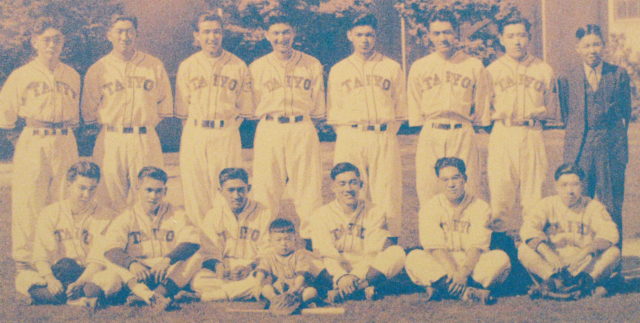
Part 9, Roommates
By David K. Yamaguchi
Continues from issue of Mar. 14, when the author’s grandfather sent a telegram from Missoula, Montana:

RE-READING JIICHAN’S TELEGRAM now, separated from him at the front desk of Western Union by 65 years, I am proud of him. Whatever Jiichan had been in the Seattle Japanese community of 1941, he was clearly being outstanding now. Inadequately clothed for a winter in the interior, and spending his limited pocket money (Japanese assets were frozen during the first weeks of the war), Jiichan is both promptly informing his clueless family where he is, and using the costly words to specify who is with him, so that their families, too, would know.
According to Dad last year, he had not known that Jiichan was going to be shipped out of town by rail. Jiichan was in the first group of Seattle-area Issei sent inland on December 18, 1941, to relieve the bulging INS jail. Others in the cars included Tom Matsuoka of Bellevue (parts 1 and 5).
Through sending a telegram, Jiichan had found a neat way around the system of delayed internee mail. Such messages would have had to be in English, so the authorities could monitor the content sent, and to whom. Apparently, the only catches were that telegrams required sufficient English to order them and funds to purchase them. The identities of Jiichan’s roommates:
SHIMIZU [George] was a Seattle Issei who had worked for years for NYK [Nippon Yuusen Kaisha], a Japanese shipping line.*
KANOGAWA [Sho] ran Washington Grocery at 14th and Washington with his wife Shizu. He was the 1941 president of the Wakayama Kenjinkai, a small association that provided the few Issei from this rural prefecture with a surrogate extended family. Jiichan had helped Kanogawa-san get started in business in 1930, as well as extended him credit.**
BANZO OKADA took in dry cleaning during the day, but was generally known as the manager of the Taiyos [Suns] Nisei baseball team. In Okada-san’s translated words, “We were never called ‘Jap’ on the playing fields… at least in baseball we were never discriminated against.” While it is hard to see how promoting youth sports could justify imprisonment, recently Yoshi Mamiya, one of my regular Nisei sources on the Seattle Japanese-American community of olde, suggested a possible Japan connection when she recently asked, “Didn’t Ban-san bring the Taiyos to Japan?” I would later find that at least one Taiyo team had made such a trip, with Heiji Okuda in 1933. The FBI began monitoring Issei activities from the late 1930s.#
HIRABAYASHI [Shungo], was a farmer in the White River valley. No slouch, he and the other three families in his farm cooperative were prominent enough in 1922 to have been targeted by the King County prosecutor as one of two test-case “violators” of the 1921 Washington Alien Land Law (even though they purchased the land in 1919). Pre-war, the families had fought unsuccessfully all the way to the U.S. Supreme Court.## Such activities could hardly have escaped the attention of the cooperative’s children, who included Hirabayashi’s son Gordon, then a University of Washington senior.
EYEGLASSCASE. #27. SHIMIZU. BANZO OKADA. Here, Jiichan is repeating, so there is no mistake. He still lacks a safe place to keep his glasses, especially in crowded conditions where they might get stepped on. (He first asked for his case on 12/12, part 6). Glasses rank among a traveling wearer’s most precious possessions.
At this point, the main thing for Jiichan and his can-do friends is that the game had changed substantively. While held in Seattle, there had always been the possibility that they might be released in a few days. Their transport 480 miles inland made it clear that their incarceration would last for some time. Otherwise, why would the government bother to send them so far?
Students: Suppose you were the recipient of this and earlier communications. What choices might you be contemplating?
Sources:
- *Dad, 1999; Yoshi Mamiya, 2006.
- **Mom, 1999; daughter Sei [today Mrs. Roy Fujiwara], 2006.
- #Elmer Tazuma, Feb. 2006; Yoshi Mamiya, Jun. 2006; see also Kazuo Ito, 1973, Issei, p. 924, and Kashima, 2003, Judgment without Trial. Okada remains relevant today for setting 1930s case law on the statute of limitations for jumping ship into the U.S. (see Google). On Heiji Okuda, see part 5 of this series.
- ## Flewelling, 2002, Shirakawa.







